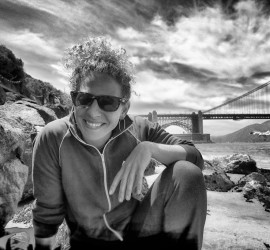Reimagining the Urban: Rebecca Novick
That’s Not My BART Stop: One of the Triangle Lab projects we’re producing right now is called Love Balm for My Spirit Child. It’s a series of performances sharing testimony from mothers who have lost children to violence. We’re calling this series “site-specific” because they’re performed on the spots where each murder took place. Site-specific in its strictest definition means a performance created specifically for a non-traditional space, often using physical characteristics of that space, or of the community who gathers there, to influence what the performance will be. In a more general or lazy way, we often use “site-specific” to simply mean “not performed in a theater.”
Continue to read…

